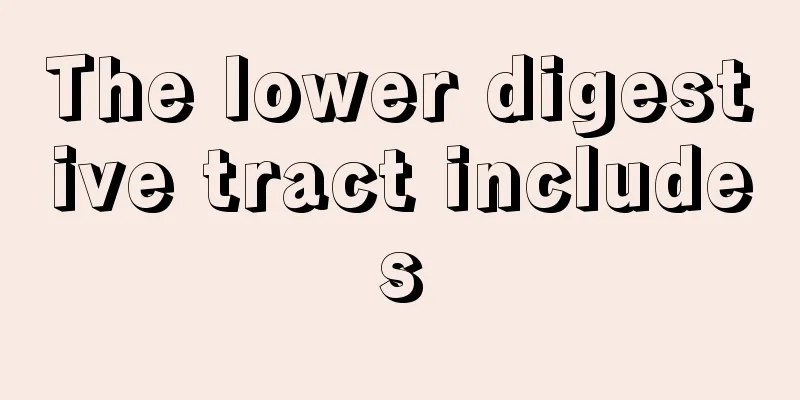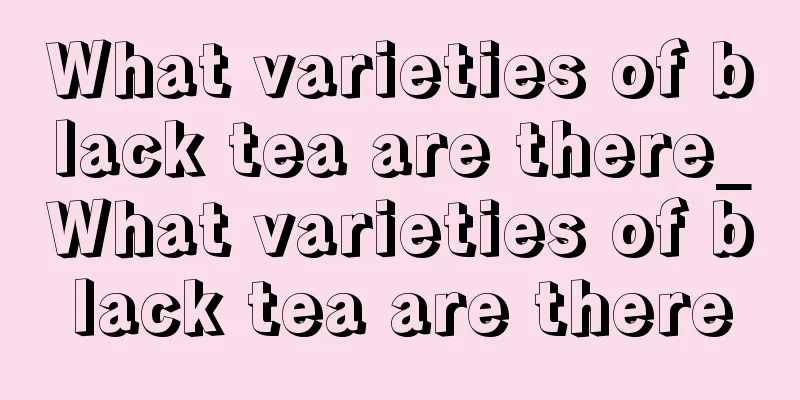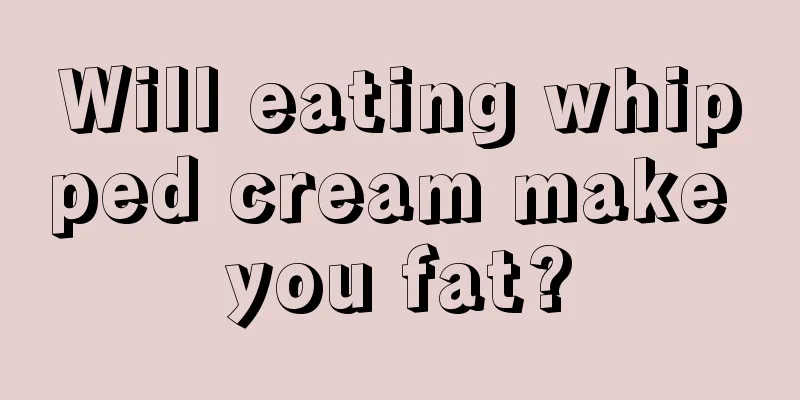The lower digestive tract includes

|
The human digestive system consists of two major parts: the digestive tract and the digestive glands. The digestive tract includes the oral cavity, throat, esophagus, and stomach. The area from the mouth to the duodenum is called the upper digestive tract, and the lower part of the jejunum belongs to the lower digestive tract. Many people don’t know much about the lower gastrointestinal tract. What does the lower gastrointestinal tract include? Let’s take a look at it next. 1. Digestive system The digestive system consists of two major parts: the digestive tract and the digestive glands. Digestive tract: includes the mouth, pharynx, esophagus, stomach, small intestine (duodenum, jejunum, ileum) and large intestine (cecum, appendix, colon, rectum, anal canal) and other parts. Clinically, the section from the mouth to the duodenum is often called the upper digestive tract, and the section below the jejunum is called the lower digestive tract. There are two types of digestive glands: small digestive glands and large digestive glands. Small digestive glands are scattered in the walls of various parts of the digestive tract, and large digestive glands include three pairs of salivary glands (parotid glands, submandibular glands, and sublingual glands), liver and pancreas. The digestive system is one of the eight systems of the human body. 2. What does the lower digestive tract include? The lower gastrointestinal tract consists of the jejunum, ileum, and large intestine. (1) Jejunum and ileum: The jejunum starts from the duodenal jejunal flexure and is connected to the ileum, which is then connected to the cecum. There is no obvious boundary between the jejunum and ileum. The length of the jejunum accounts for 2/5 of the total length, and the ileum accounts for 3/5. Both belong to the small intestine. The main functions of the jejunum and ileum are to digest and absorb food. (2) Large Intestine: The large intestine is the lower part of the digestive tract and consists of four parts: the cecum, appendix, colon, and rectum. The large intestine of an adult is 1.5 meters long. It starts from the ileum and is shaped like a square, surrounding the jejunum and ileum. The main function of the large intestine is to further absorb water and electrolytes and to form, store and excrete feces. 3. The upper digestive tract consists of the mouth, pharynx, esophagus, stomach, and duodenum. (1) Oral cavity: It consists of lips, cheeks, palate, teeth, tongue and oral glands. When the mouth is stimulated by food, the glands in the mouth secrete saliva. The chewed food is mixed with saliva and passes through the esophagus with the lubricating effect of saliva. The amylase in the saliva can partially break down carbohydrates. (2) Pharynx: It is the common passage of the respiratory tract and the digestive tract. The pharynx can be divided into three parts: nasopharynx, oropharynx, and laryngopharynx based on its passages with the nasal cavity, oral cavity, and larynx. The main function of the pharynx is to complete the complex reflex action of swallowing. (3) Esophagus: The esophagus is a long muscular tube with a total length of about 25 to 30 cm. The main function of the esophagus is to transport food into the stomach. Secondly, it prevents air from entering the esophagus during breathing and prevents the contents of the stomach from flowing back into the esophagus. (4) Stomach: It is divided into four parts: the cardia, fundus, body and antrum. The total capacity of the stomach is about 1000 to 3000 ml. The gastric wall mucosa contains a large number of glands that can secrete gastric juice. Gastric juice is acidic, and the pH value (acidity) usually fluctuates between pH 2.0 and pH 3.0, and sometimes may reach pH 1.0. The main components of gastric acid are hydrochloric acid, sodium, potassium chloride, digestive enzymes, mucin, etc. Gastric juice has many functions, its main functions are to digest food, kill bacteria in food, protect the gastric mucosa, and lubricate food to make it easier for food to pass through the stomach. The main function of the stomach is to hold and digest food. The food bolus that enters the stomach from the esophagus forms chyme after mechanical digestion and chemical digestion in the stomach. The chyme is then discharged into the duodenum with the help of the movement of the stomach. (5) Duodenum: The starting section of the small intestine. The length is equivalent to the width of one's twelve fingers (about 25 to 30 cm), hence the name. The duodenum is C-shaped and surrounds the head of the pancreas. It can be divided into four parts: the upper part, the descending part, the lower part, and the ascending part. Its main functions are to secrete mucus, stimulate the secretion of pancreatic digestive enzymes and bile, and serve as an important site for protein digestion. |
<<: What is the analysis method for the results of six blood lipid tests?
Recommend
What harm does formaldehyde do to the human body
Formaldehyde is a chemical product that is very h...
Salt wastewater treatment
It is well known that water pollution has a great...
The most effective way to regulate blood stasis constitution
For those who have blood stasis constitution, the...
The most effective way for women to lose weight
Weight loss is a long-standing topic. Losing weig...
There are red blood streaks on my arms
Many people often hear about red blood streaks in...
What is the effect of sticking ginger slices on the navel
Some friends may be interested in this approach, ...
Clear nasal discharge turns to yellow nasal discharge
Whether you are a rhinitis patient or a cold pati...
The efficacy and function of scented ink
I don’t know if you have ever used scented ink in...
Where should I scrape for pharyngitis
Gua Sha is well known to many people because it i...
What to do if the baby doesn't suck the pacifier
Many babies actually show rejection behavior when...
Life expectancy after surgery for peripheral lung cancer
Lung cancer is the most common primary lung malig...
Early symptoms of testicular cancer How to prevent testicular cancer
For male friends, the testicles are a very import...
Things to note when getting hepatitis B vaccine
I believe that everyone has received the hepatiti...
Are there parasites in the blood?
Blood refers to a red liquid that flows in the he...
Smoking is bad. My left chest hurts a lot.
Many people are smoking nowadays. Although it is ...









